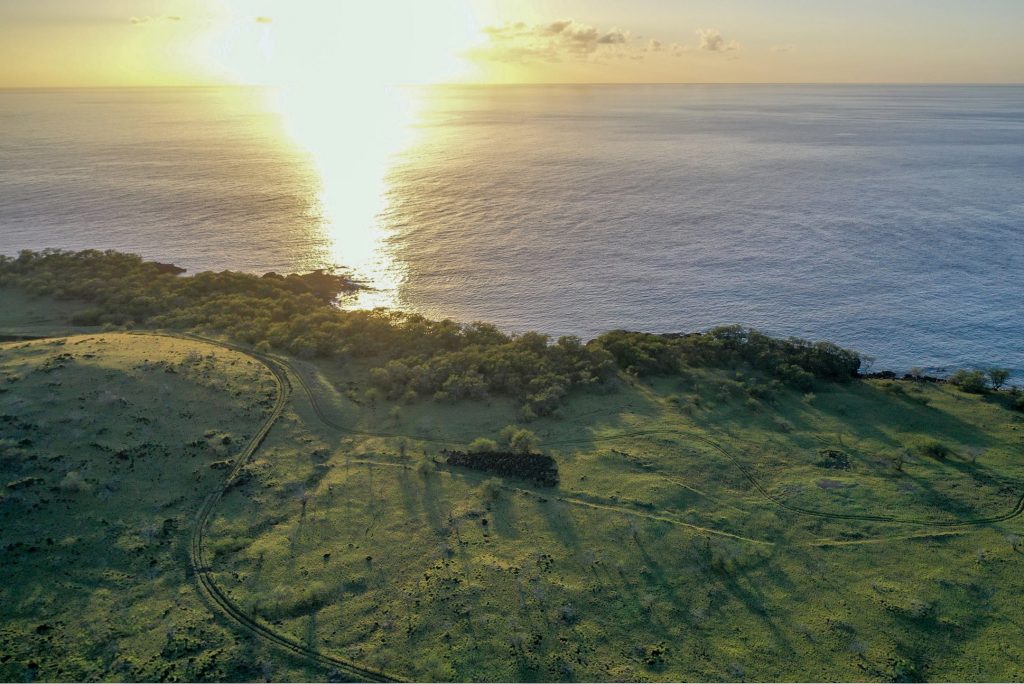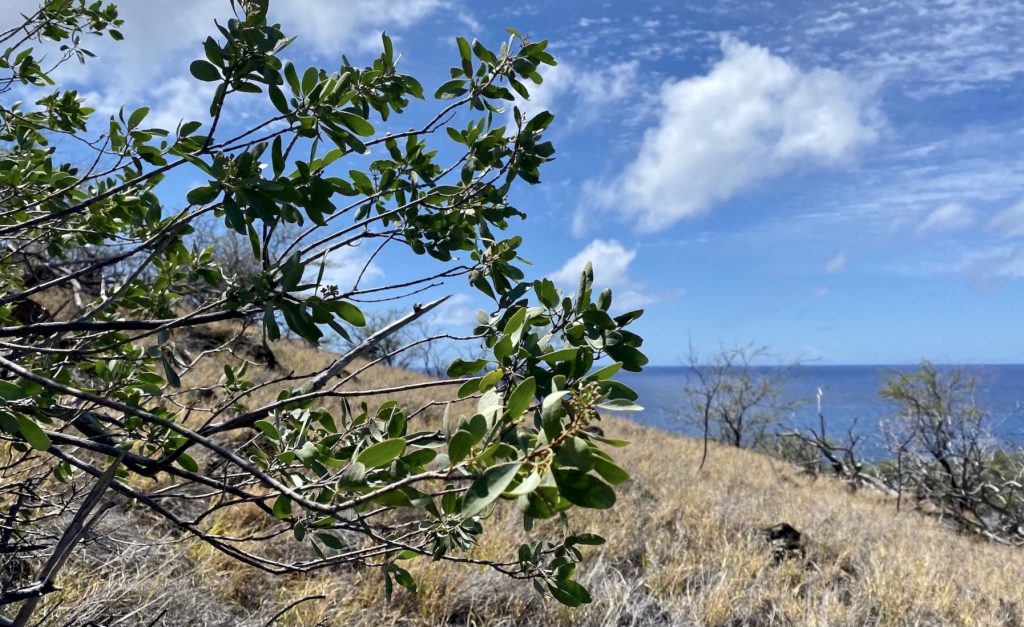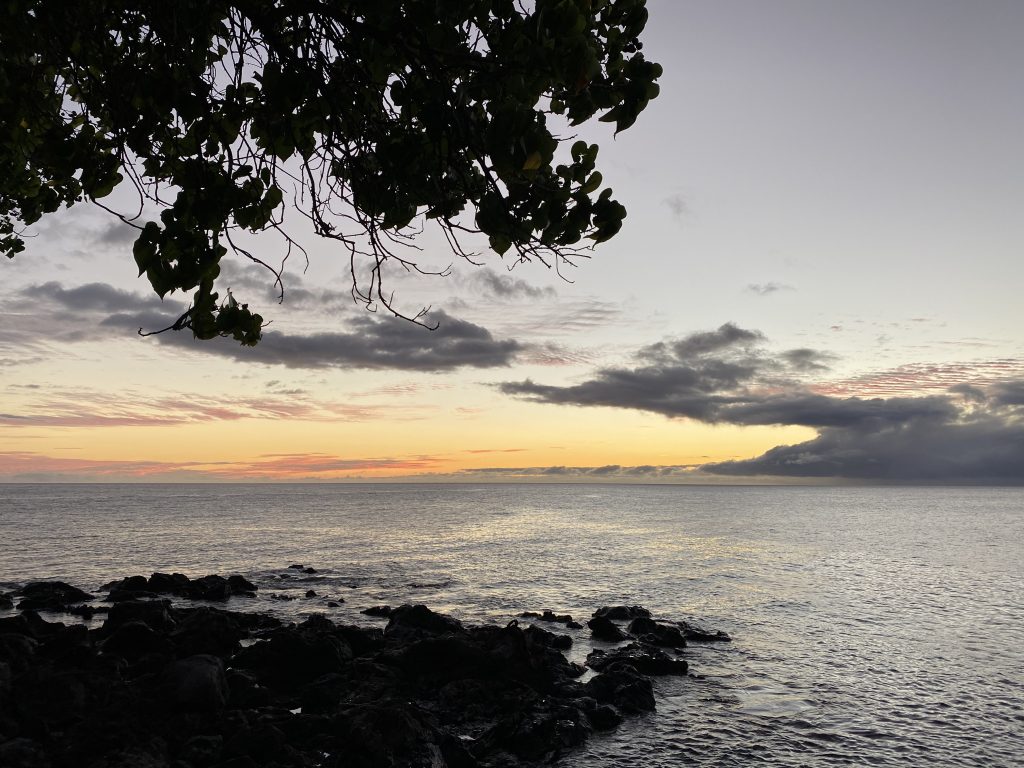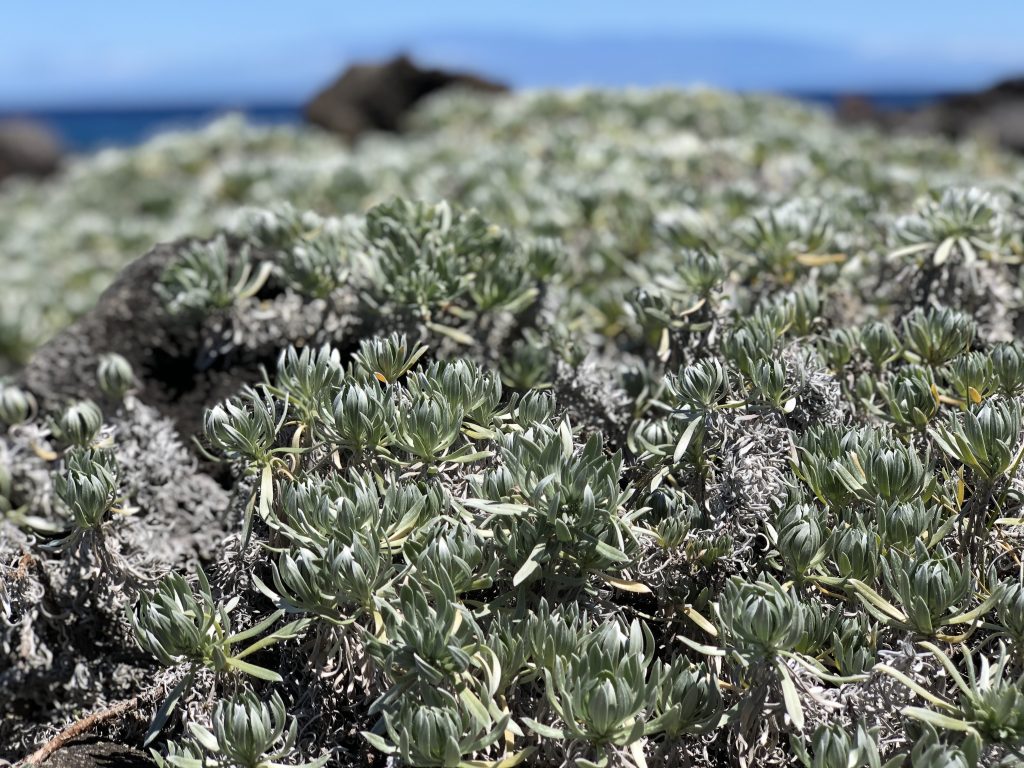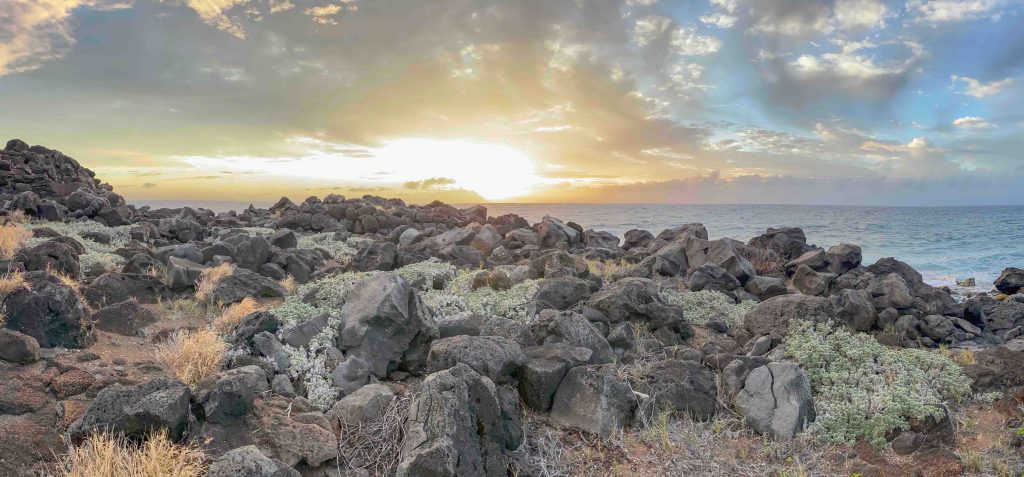Hawaiʻi Land Trust nearing finish line to purchase 642 acres in Māhukona to protect forever

Heading toward Kohala along the bucolic coastline outside of Kawaihae on the Big Island, a winding backroad leads to an old, historic railroad house where people have been gathering since mid-September to learn about the rich cultural heritage and threatened coastal ecosystem of Māhukona.
At the talk story sessions — led by the Hawaiʻi Land Trust’s ʻĀina Steward & Educator Keone Emeliano and Director of ʻĀina Protection Shae Kamakaala — the discussions revolve around Māhukona’s past, present and future.
There was a time when that future involved the development of a large resort with luxury homes and a golf course.
But after years of effort by many, including the late lineal descendant Aunty Patti-Ann Solomon, 642 acres of beloved — and historically, culturally and ecologically important — land in Māhukona is close to being protected forever.
Hawaiʻi Land Trust is at the “finish line” of purchasing 11 parcels of land known as the Māhukona Navigation and Ecological Complex with $13 million in federal, state and county funding.
“We are working our best to close by mid-December,” Kamakaala said. “That is the goal. If not then, soon after. We are really confident in our ability to close.”
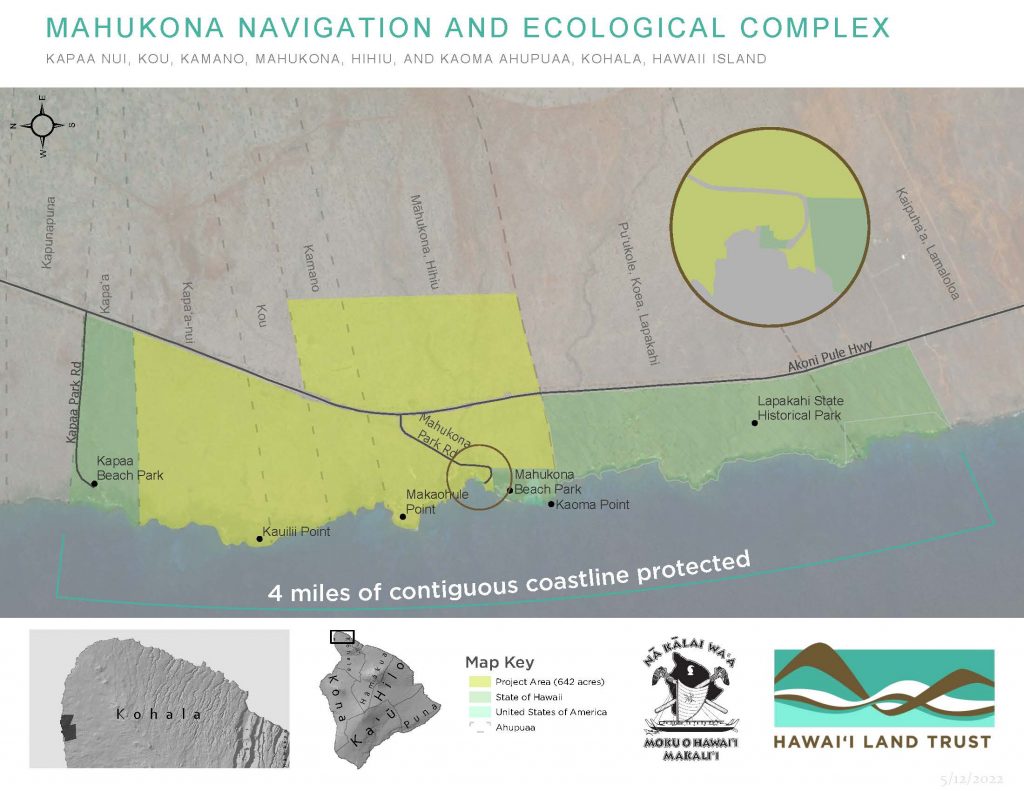
Hamana Ventura, property manager for Hawaiʻi County that is contributing $8 million, said: “We havenʻt heard that itʻs not going to closing. We’re cautiously optimistic and super excited to be part of it.”
The 11 parcels connect with Māhukona Beach Park, Lapakahi State Historical Park and Kapaʻa Beach Park, creating four miles of contiguous protected coastline.
The collaborative four-year effort — by the Hawaiʻi Land Trust, the traditional Hawaiian voyaging nonprofit Nā Kālai Waʻa, the Kohala community, public partners and private donors — is part of a $20 million campaign that includes $7 million for stewardship.
“It’s a total package that is needed,” Kamakaala said. “There is a whole plethora of other costs and expenses. As a buyer, Hawaiʻi Land Trust wants to make sure we step into ownership and stewardship with a really strong footing.”
Those involved say this is a once-in-a-lifetime opportunity to rewrite the future of a Hawaiian landscape and heal its ecosystem. It’s a chance to protect in perpetuity more than 170 cultural sites, threatened and endangered species habitat, and cultural practices passed down through many generations, including navigation.
Hawaiʻi Land Trust has secured the $13 million needed for the purchase of the land, but it is still trying to raise — before the closing — the remaining $1.4 million for stewardship.
Emeliano said he tells potential donors about the history and importance of Māhukona, explaining it is “just hanging on.”
“If you want to be a part of saving a place, a culture, a community, then this is definitely one on those places.”
The land was in the works to become a resort when it was owned by Surety Kohala Corporation. Hawaiʻi County had granted the company a special use permit for a development, which at its most ambitious included a boutique oceanfront hotel of more than 200 rooms, 100 to 125 one-acre lots of luxury residences, and an 18-hole golf course.
But before the project or a less ambitious version of it could be built, the permits expired and the land was foreclosed on in 2012, according to accounts at the time.
In 2019, after eight years of the local community nominating Māhukona for the county’s Public Access, Open Space and Natural Resources Preservation program, Kamakaala said the Hawaiʻi Land Trust began to assess what it would take to purchase the land. The trust estimated $5 or $6 million. But Solomon “shared with us it would be like $20 million.”
Kamakaala said raising that much money seemed difficult, but Solomon and her family said: “We’re going to try.”
The Solomon ʻohana has a deep connection to the land, having lived in the area for seven generations. Stories have been passed down about their kūpuna (elder), who was brought to the area at a very young age to be trained as a navigator.
On Wednesday night, Kamakaala and others gathered to celebrate the one-year passing of Solomon, who helped make the purchase possible
“She had a way of instilling confidence and making things fun and easy,” Kamakaala said.
Now, Kamakaala said the Hawaiʻi Land Trust feels the “immense kuleana (responsibility)” to care for the land that has been entrusted to them by the local community.
The Hawaiʻi Land Trust purchase will forever prevent development of the ancestral lands, which can continue to be used for education, community events and Hawaiian cultural practices that include navigation.
Once Hawaiʻi Land Trust buys the land it will immediately grant a conservation easement to Hawaiʻi County that will heavily limit development rights.
It will preserve the property, as it is seen today, for generations to come, Ventura said.
As part of the purchase agreement, the land trust also has been leasing the land at a “nominal fee,” which takes off some of the burden of land management from the land owners during the years it has taken to close a land purchase involving government funding.
While the fair market value of the land is about $20 million, Hawaiʻi Land Trust was able to negotiate a “pretty good purchase price” of $13 million with three related LLCs — Māhukona South, Māhukona North and Māhukona — which are part of a pension fund managed by a firm in Florida, Kamakaala said.
“They became educated about the land asset that they had,” Kamakaala said. “It can be rare for a landowner to be willing to sell for conservation purposes because, you know, we’re not a normal buyer. It takes years to fundraise for these funds. So we are very thankful to the seller for their willingness to work together for this purchase.”
In 2021 and 2022, Hawaiʻi Land Trust secured the $13 million toward the land purchase.
- Hawaiʻi County passed a resolution in July 2021 that provides $8 million from its Public Access, Open Space and Natural Resources Preservation fund for the acquisition of the land. It had been ranked as the No. 1 project to fund.
- In October 2021, the U.S. Fish and Wildlife Service approved a $4 million Recovery Land Acquisition grant for the conservation purchase. These grants are super competitive with applicants from around the country, and it was the largest grant awarded for a project in Hawaiʻi.
- In late 2022, Hawaiʻi Land Trust secured the last piece of the land purchase with a grant of up to $3 million from the State Legacy Land Conservation Program. This grant also can cover acquisition costs.
Hawaiʻi Land Trust said in a report the remaining $7 million that is being raised for the project will be used for:
- land stewardship and education endowment ($5 million)
- historic building restoration for community use ($1 million)
- urgent repairs for water, infrastructure and wildfire safety ($750,000)
- land protection project costs ($250,000)
At the talk story sessions, which continue until Dec. 13, people can learn about why all the effort went into protecting Māhukona.
One discussion was about the revival of ancient wayfinding. Māhukona and neighboring ahupuaʻa on Hawaiʻi Island’s northern Kohala Coast continue to serve the function of prime training grounds for traditional navigational practices.
Hawaiʻi navigators have revived star and elemental study and ceremony at Koʻa Heiau Holomoana, and the Hawaiian voyaging canoe and many other canoes can be seen sailing in Māhukona’s waters.
The sites at Māhukona show how voyagers from throughout Moananuiakea, the Pacific Ocean, recognized the important function this place had been used for training in navigation long before Europeans arrived on Hawaiʻi’s shores.
The Solomon ʻohana speaks about when they were kids and their kūpuna would bring them to Koʻa Heiau Holomoana (ancient navigational site) and the old railroad house during the summer to learn about navigation.
Emeliano, who grew up in Kohala and is overseeing stewardship for the land managed by Hawaiʻi Land Trust, said he and many other families have strong connections to Māhukona. In his youth, he spent a lot of time camping on the land as a Boy Scout.
“A lot of Kohala families can attest that is where we all learned to swim,” he said.

“Not much has changed, just the faces,” he said. “Before it was an area not known to really anybody on the island. Nobody really knew about it unless you had family there. Now we see more tourists, more outsider people.”
Emeliano also worked with Solomon, who brought him in to work on the land that her family has been on for generations.

Before Solomon passed last year, she suggested that hard-working Emeliano should be steward of the land.
“Being down here it’s a job, but it’s not about the title or the money,” he said. “It’s more on a personal level, not just for myself but for my family and community.”
A lot of donations are coming in through mail and online, Emeliano said, including very generous individual donations. He hopes people will continue to help join the cause.
And he said the time is now: “Without these people and this place, it won’t be Māhukona.”
To learn about the Māhukona project or to donate, click here.
This story was reported by Megan Moseley, Tiffany DeMasters and Cammy Clark.



